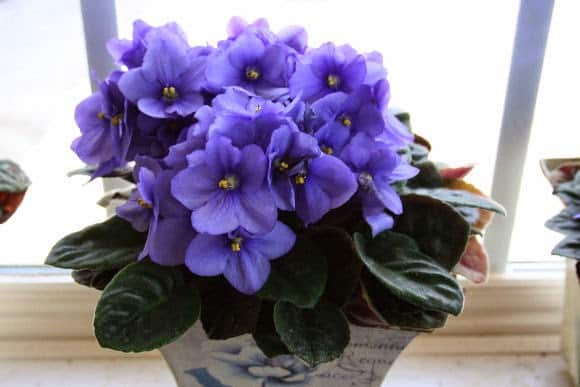Learn how to bring house plants indoors for the winter – and leave the bugs outside!
Many people bring their beloved house plants outdoors in the summertime. Such plants much be moved indoors before the first frost. But during the summertime, insects may find the plant or its container a cozy retreat. Learn how to banish the bugs and bring your beautiful plants back indoors without hitchhikers!
Moving House Plants and Other Plants Indoors
There’s a right way and a wrong way to bring house plants indoors for the winter.
As summer slowly slides into the golden days of autumn, it’s time to begin making plans to move your house plants indoors for the winter and to transition garden plants such as geraniums inside. Many people give their house plants a ‘summer vacation’ and bring their tropical plants and common indoor house plants outside in the spring. You must move them back indoors before the first frost. Other plants such as geraniums can be saved over the winter if they get enough light.
Yet how to bring house plants indoors for the winter can present presents several challenges. You must take care not to bring insects, insect eggs or larvae, or diseases inside that could affect other houseplants you have indoors. Moving plants is also a shock to their system; after all, how often do full grown plants move from one location to another in the wild? Use these suggested steps for transitioning your house plants back indoors for the winter months.

How to Bring House Plants Indoors for the Winter
To bring your houseplants indoors for the winter months, take steps to ensure they’re not bringing in more than their leaves. Insects, insect larvae and other critters often take up residence among house plants outside.
- Check your plants for signs of insects. Look for them on the top of leaves, under the leaves, along the stem and under the rim of the pot. Pick the pot up and look underneath, too. Spiders and other insects often weave egg cases in dark, secure areas, such as under the pot rims or underneath the pot itself.
- If you see insects on the rim of the pot or cocoons, use a spray from the garden hose or a cloth to remove them. Always wear gloves and use caution if you have poisonous spiders and other insects in your area. Avoid contact and use considerable care and caution. Know what to look for and how to identify them!
- Use a sharp stream of water from your hose to knock most insects off the plant.
- Consider repotting your house plants at this time. Insects that lay eggs in the soil can hatch once they come inside. By using sterile, bagged garden soil and repotting the plants, not only are you giving them better soil but you are preventing insects from coming indoors.
- If you see signs of an insect infestation, talk to the professionals at your local County Cooperative Extension office about the best sprays or treatment to use. Insecticidal soap is one common solution. Follow label directions and treat plants outdoors before bringing them inside.
- Quarantine plants for two weeks or more when you bring them indoors if you can. Keep them in a separate area of the house away from plants that never go outdoors. If they’ve brought diseases or insects inside, this may keep them away from the healthy plants.
Caring for Houseplants
Be sure to provide your houseplants with plenty of TLC once you move them back inside. Check water, light and humidity conditions.
Many house plants and holiday plants such as Christmas cactus need very specific requirements to bloom and flourish. Try grouping your plants together according to the light and humidity requirements they need. For example, Christmas cactus and some orchids like similar requirements; high to medium light, cool temperatures and high humidity. Grouping houseplants together makes it easier to care for them and keep them healthy.
Be sure to call your local County Cooperative Extension office with specific questions you may have about unwelcome insect pests in the house. They know about local flora and fauna and can answer specific questions.




